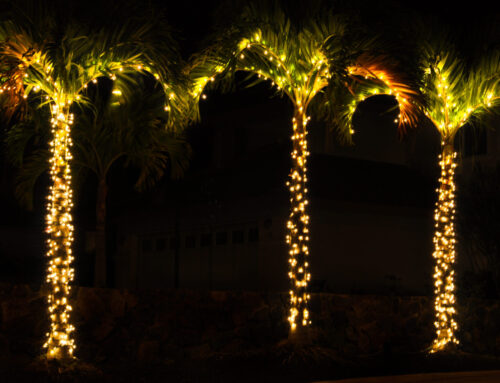The amount of sun Hawaii receives year-round makes conversion to solar appear a natural option for homeowners, especially since power costs in Hawaii are two to three times more than other places in the country. After all, who wouldn’t want to cut down their energy costs?
But there are things to consider before installing solar panels. One of the most significant factors is that any solar installed on the grid must be approved by Hawaiian Electric, and there is a waitlist for that approval.
Reports indicate that the waitlist was initiated in 2013. By April of that year, consumer efforts to install solar panels were reportedly limited by Hawaiian Electric according to PBS News Hour. By 2015, energy providers, solar installation companies and utility commissions from states on the mainland were studying why Hawaii was putting the brakes on solar expansion. By September 2016, the capacity limit set on rooftop solar systems that export energy to the power grid was nearly reached, and by October 2016 Hawaii solar installation had slowed so much that the solar sector saw employment decrease 42 percent. So, what does all this mean for homeowners in Hawaii considering solar?
What Happened?
According to reports from a variety of sources, including The New York Times and Hawaii News Now, Hawaiian Electric began restricting and even barring residential solar systems in response to technical and financial challenges. Representatives from the utility expressed concern about how to pay for maintaining and operating their power grids, as rooftop solar panels cut into utility company revenue and put new pressures on an old infrastructure. The company stated that the safety and reliability of their grid was threatened, and pointed out that the power grid was designed to carry electricity into homes, not away from them, creating a problem with unanticipated voltage fluctuations that can overload circuits, burn lines and lead to brownouts and blackouts.
When a study showed that with upgrades the system could handle more solar than the company assumed, the Hawaiian Public Utility Commission (PUC) ordered the utility to start approving more installations, or prove why it couldn’t. In compliance, Hawaiian Electric upgraded circuits and meters to better regulate flow of electricity, in an effort to find balance between energy produced and energy used.
But another significant issue, as noted in a 2015 Scientific American article, is that Hawaii’s grid is isolated. Mainland states, like California, and countries like Germany, interconnect their grids with other providers, including those in bordering states and countries. There are no powerlines connecting Hawaii to the mainland, so the utility company has nowhere to transfer any extra solar power produced. It also doesn’t have access to back-up electricity.
Despite upgrades, in September of 2016, Oahu, which previously was the only Island where some areas still had room for grid-tied solar systems, hit its PUC mandated 25 MW limit. In an October 2016 Utility Dive newsletter brief, it was reported that “Hawaiian Electric Co. has now reached a cap on its grid-supply program in all of its service territories, meaning new customers no longer have an option to sell excess capacity back to the utility. A less popular self-supply program remains, but relatively few customers have opted for it.”
How is Hawaiian Electric Meeting This Challenge?
In response to increased pressure, aging equipment, and a need to keep customer bills as low as possible, Hawaiian Electric is upgrading its systems with a focus on renewable energy projects, such as the biodiesel Campbell Industrial Park Generating station, the Kahuku Wind Farm and the Kalaeloa Solar Farm. Other renewable energy sources planned for Hawaii’s future fuel mix include biomass, geothermal, hydroelectricity and ocean energy.
The company’s website provides suggestions for customers on how they can still go solar in their home, such as installing a solar water heating system. They are also promoting a pilot program, Community Solar. This is an option that the utility hopes will provide the benefits of solar energy to customers without access to rooftop solar. The proposal is for a community solar facility to be built in an optimal location and scaled to serve the entire electric system cost-effectively. This option ensures full integration and compatibility with the grid, and allows customers who purchase an interest in the facility a chance to offset their monthly bills.
What Other Options Are Available to Customers?
As noted above, the self-supply solar option is still available. This is an option that supplies the needs of a single home, without the option of feeding electricity back into the grid. All energy must be consumed or stored at the home. Customers who elect to do this can remain on the grid, or disconnect themselves from it. Each choice has pros and cons, and things to carefully consider before signing a solar installation contract.
Self-supply customers who choose to remain on the grid must first seek approval from Hawaiian Electric through an expedited wait list. Typically, energy is only supplied through their solar system during the day and they are dependent on the grid for energy after dark. An additional battery storage unit must be purchased in order to store excess energy generated during the day. Currently the Tesla Powerwall 2 can store enough energy to power the average two-bedroom house for a full day. The cost of one 14kWh Powerwall battery is $5,500. The cost of installation and supporting hardware starts at $1,500, with an estimated total cost of $7,000. Considering a standard solar system can run $25,000 to begin with, that is a significant increase in cost.
However, the technology for battery storage units is advancing and it is predicted that the cost of batteries will decrease in the near future. This could make self-supply solar options more appealing in the coming years. It could also make going off the grid an increasingly popular choice. If a homeowner installs solar equipment to go off the grid, it is not necessary to seek approval from Hawaiian Electric, therefore there is no waitlist. It is important to understand though, that, according to Hawaiian Electric officials, anyone who disconnects from the grid will not have any access to electricity from the utility company – even in an emergency.
If you are considering converting to rooftop solar, Hawaiian Electric provides online tools to help you decide if it is a good choice for you. They also provide tips to reduce your energy bill without the expense of solar installation.
Do you already have rooftop solar? Share your experiences in the comments below.







Leave A Comment